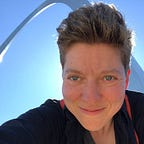Wayfinding our future.
As I continue in my role here at the Barnes Foundation, I’ve found many people asking about when we’ll see technology and innovation start to appear — there’s a certain expectation that all of this is coming and is the priority from the outset. While it is a key thing we’re thinking about, there are bigger challenges in visitor experience that need to be solved first starting with how visitors approach our physical site, enter the building, and flow throughout.
I should pause here and give you some context about me. Did you know I’m an architecture geek of such intensity that I arrange travel plans — including speaking engagements — around buildings to see along the way? That may sound a little tame, so let me give this greater clarity. I was one of those students who got out of Architecture 101 and backpacked across Europe to see every edifice in Kostof; this included a determination to find/stay in every Le Corbusier building possible, pilgrimages and overnight trains to places people have never heard of, later in life trips to Brasilia, etc. Not kidding; I’m one of those people.
With that perspective, can you imagine what an absolute privilege it is to come to work every day in one of the world’s most interesting and beautiful contemporary buildings? I am lucky. Not only is this an amazing structure, but there are key members still on staff who work to manage the building who’ve been here since the building phase. There’s a lot of institutional knowlege about the history and why decisions were made.
Upon my arrival, the most compelling series of conversations was with staff directly responsible for the building about how visitors had been using it. In some cases, how we thought visitors would use the building is different than how they actually use the building. We’ve got clear “desire paths” at work; unexpected challenges to solve in how people find the building, enter, get tickets, check coats, use services, and move from place to place. We are at a perfect juncture to solve some of these challenges because we’ve lived in the building just long enough — four years — to understand how it works for visitors.
Exterior identification, wayfinding, and flow are all top of mind and a key part of our strategic plan. What was fascinating to me is that staff is in total alignment about what the issues are given how they’ve seen the building used. However, while we agree on exactly what they are, we actually differ quite a bit in how to resolve them.
Identification, signage, and pedestrian traffic are not the easiest things to solve. In some cases we can pilot changes to flow, but, often, the changes that may be required are larger ones that may be costly. These are the kinds of things where you don’t often get a second shot. So, where you’ve seen me taking shortcuts in other projects, this is one of those places where we felt fundamental investment prior to moving forward was the best route. As such, Arup has been retained to come in for a traffic flow assessment.
The Arup team — Eric Rivers and Margaret Newman — have been onsite listening to staff and completing observation over both normal and busy days. I’m pretty excited to be working with Eric again. When we brought Arup in for planning at Brooklyn, we had a very similar situation where staff were aligned on the issues, but not how to fix them. It was through that project, that Eric made recommendations some of us thought “would never work,” but as we started to implement we found those ideas did work and worked well. I think the entire BKM crew would say that the Arup work on the visitor experience project was some of the most rewarding and lasting of the entire project.
It was clear to us at the Barnes that investing in this way would give us a good foundation moving forward. We believe there are many instances where we can fundamentally improve the identification of the building and the flow of visitors throughout the facility. We expect to get Arup’s recommendations at the end of August and you’ll start hearing a bit more from me about specific challenges and how we plan to address them.
